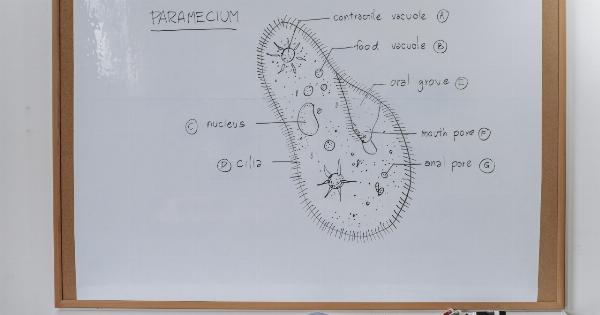Gelatin is a protein-rich substance derived from collagen, a key structural protein in connective tissues such as skin, bones, and tendons.
While commonly known for its role in making desserts and gummy candy, gelatin has gained attention for its potential impact on joint health and pain relief. In this article, we will explore the science behind gelatin and its potential benefits for those suffering from joint pain.
The Composition of Gelatin
Gelatin is created by breaking down collagen through a process called hydrolysis. This process involves the use of heat and pressure to break the bonds between collagen molecules, resulting in a gel-like substance with unique properties.
The primary component of gelatin is a mixture of amino acids, the building blocks of proteins. These amino acids include glycine, proline, and hydroxyproline, which are highly beneficial for joint health.
Additionally, gelatin contains essential minerals such as calcium, magnesium, and phosphorus, which are vital for maintaining healthy bones and cartilage.
Gelatin and Joint Pain
As we age or subject our joints to excessive wear and tear, the cartilage that cushions the joints can deteriorate, leading to joint pain and discomfort.
Gelatin has been studied for its potential to promote joint health and alleviate pain in various conditions, such as osteoarthritis.
1. Osteoarthritis
Osteoarthritis is a degenerative joint disease characterized by the breakdown of cartilage and the formation of bone spurs.
Studies have shown that the amino acids found in gelatin can stimulate the production of collagen in the body, helping to rebuild damaged cartilage and reduce joint pain. Additionally, gelatin may have anti-inflammatory effects, further aiding in the management of osteoarthritis symptoms.
2. Rheumatoid Arthritis
Rheumatoid arthritis is an autoimmune condition that causes chronic inflammation in the joints. While gelatin may not directly target the underlying cause of rheumatoid arthritis, it can help in reducing joint pain and inflammation.
The amino acids in gelatin have been found to have an anti-inflammatory effect, potentially providing relief to individuals with rheumatoid arthritis.
3. Sports Injuries
Athletes and individuals engaged in intense physical activities are prone to joint injuries and pain. Gelatin can play a role in supporting joint health in these individuals as well.
The amino acids in gelatin are essential for the formation of collagen, which is crucial for maintaining the integrity of tendons, ligaments, and other connective tissues. Supplementing with gelatin may aid in the recovery and prevention of sports-related joint injuries.
4. Osteoporosis
Osteoporosis is a condition characterized by reduced bone density and increased susceptibility to fractures.
While gelatin’s impact on osteoporosis is still under investigation, its amino acid profile and mineral content make it a potential candidate for supporting bone health. Research has suggested that gelatin’s collagen-derived peptides may enhance bone formation and mineralization, thus contributing to the prevention and treatment of osteoporosis.
The Role of Gelatin in Joint Health
Gelatin offers several mechanisms through which it can support joint health and alleviate pain.
1. Collagen production:
Gelatin is abundant in the amino acids glycine, proline, and hydroxyproline, which are necessary for collagen synthesis. Collagen is a vital component of cartilage and other connective tissues, providing strength, flexibility, and support to joints.
By increasing collagen production, gelatin helps rebuild damaged cartilage and promote joint health.
2. Anti-inflammatory effects:
Chronic inflammation in the joints is a common feature of many joint conditions, including arthritis.
Gelatin contains amino acids that possess anti-inflammatory properties, which can help reduce pain, swelling, and stiffness associated with joint inflammation.
3. Joint lubrication:
Gelatin contains substances that help maintain joint lubrication, such as hyaluronic acid. Hyaluronic acid acts as a lubricant and shock absorber in the joints, reducing friction and minimizing wear and tear on the cartilage.
4. Nutrient support:
Gelatin is rich in essential minerals, including calcium, magnesium, and phosphorus, which are critical for maintaining healthy bones and cartilage.
These minerals contribute to the overall structural integrity of joints and may aid in the prevention and management of joint conditions.
How to Incorporate Gelatin Into Your Diet
Now that we understand the potential benefits of gelatin for joint health, let’s explore some ways to incorporate it into your diet:.
1. Gelatin supplements:
Gelatin supplements are available in powder or capsule form. They can be easily added to your daily routine and provide a convenient way to increase your gelatin intake.
When choosing a gelatin supplement, opt for high-quality, grass-fed or pasture-raised sources to ensure you’re getting the best possible nutrients.
2. Homemade bone broth:
Bone broth is a nourishing and delicious way to incorporate gelatin into your diet. It is made by simmering bones (such as chicken, beef, or fish) with water and various vegetables and herbs.
The slow cooking process helps extract collagen and other beneficial compounds from the bones, resulting in a gelatin-rich broth.
3. Gelatin desserts and snacks:
If you enjoy indulging in sweet treats, consider making gelatin-based desserts or snacks. Gelatin can be used to make homemade gummies, fruit-based gelatin desserts, or added to smoothies for an extra nutritional boost.
By opting for homemade versions, you can control the ingredients and ensure a higher gelatin content.
Consulting with Your Healthcare Provider
While gelatin holds promise for supporting joint health and alleviating pain, it is essential to consult with your healthcare provider before making any significant changes to your diet or starting any new supplements.
They can provide personalized advice and determine if gelatin supplementation is appropriate for your specific condition and overall health.
In conclusion,
gelatin, derived from collagen, offers potential benefits for joint health and pain relief. Its amino acid profile supports collagen production, which is crucial for maintaining healthy cartilage and connective tissues.
Gelatin’s anti-inflammatory properties and its role in joint lubrication further contribute to its potential impact on joint pain management. By incorporating gelatin into your diet through supplements, homemade bone broth, or gelatin-based desserts, you may experience improvements in joint discomfort and overall joint health.































